Hydrangea large-leaved Tugese (Together)
Panicle hydrangeas have long been an adornment of country gardens. This is because their elegant look and airiness of inflorescences attract many flower growers. However, large-leaved hydrangeas also have something to please you. Neat flowers, collected in dense spherical inflorescences, depending on the variety, can be bright or delicate. Our story will focus on the Tuguese variety, which has an inspiring beauty.
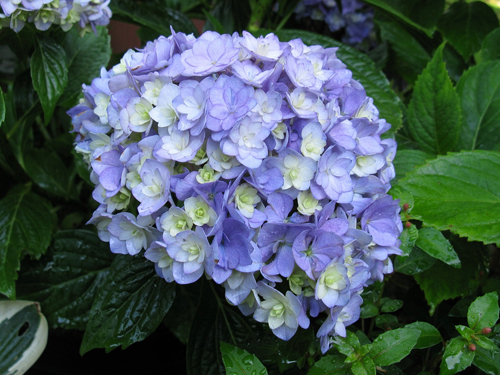
History of creation and description of appearance
This variety was bred by French breeders. According to a specific classification, it belongs to the You & Me series of terry types. Together is a remontant variety that produces inflorescences equally well on the shoots of the past and current years. It is a deciduous shrub with a spherical crown. The bulk of the shoots grows vertically upward, while the lateral stems of the culture are curved, like arcs. The crown of the bush looks dense due to the numerous oppositely sitting leaves: fleshy, green, devoid of shine, up to 14 cm long. They are ovoid, serrated at the edges and pointed at the ends. The height of the hydrangea ranges from 0.6 to 1 meter, the width is from 70 to 90 cm.
Tugese inflorescences look like lush caps. Spherical, they are formed at the ends of the stems, reach a diameter of 20 cm, consist of large flowers 2-3 cm each, and stand out against the background of dark foliage, first with light green, later with pink, blue or lilac shades. In autumn, the color of the inflorescences becomes even more intense: purple, dark pink or cherry. The hue of the flowers can be adjusted by experimenting with the acidity of the soil. The flowering culture, usually lush and abundant, lasts from June to mid-autumn. Together blooms in the year of planting.
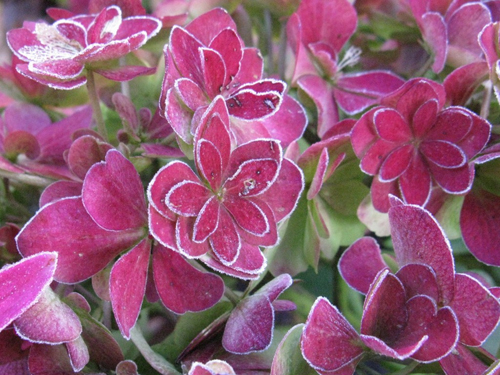
Hydrangea is quite frost-hardy and can withstand temperatures down to -23 ° C (winter hardiness zone according to some data 5, according to others - 6). She needs to be covered for the winter. The variety is very rarely sick and damaged by insects.
Growing features
A bright beauty does not make excessive demands on her content. She loves partial shade and diffused light, does not tolerate drafts. The tuguese should not be placed next to trees.
It is recommended to plant the plant in spring in fertile, loose soil. You can make up the potting soil yourself. You will need leafy soil, humus, peat and river sand in a ratio of 2: 2: 1: 1. It is preferable to use soil with an acidic or slightly acidic reaction, giving blue and purple shades of inflorescences. To obtain a pink color of flowers, a neutral soil is needed. More details about how to change the shade of hydrangea inflorescences, you can find out in one of our articles.
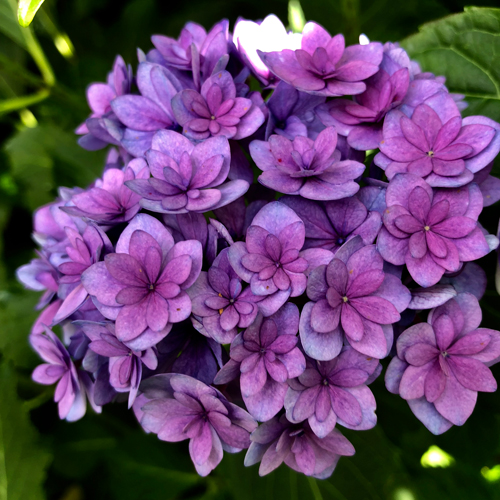
The shrub must be regularly watered with soft water, fed with mineral fertilizers. It is important to periodically loosen the soil under the flower.
Use cases
The plant is suitable for the design of single, group plantings and alley plantings. The shrub is also grown as a pot culture. From the lush inflorescences of Tugese, beautiful flower bouquets are created, since they stand in the water for a long time.
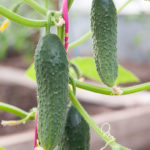


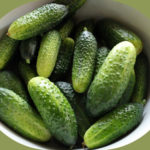
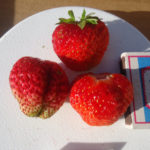
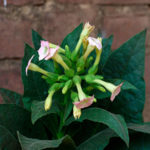



I adore hydrangeas, but for many years in the garden I had to grow only paniculate and tree-like, and admire large-leaved only in pots. Once I came across this variety - honestly, I did not believe in its frost resistance and repair ability, I thought it was advertising, but I could not resist the extraordinary double flowers, I bought it. It turned out that everything is true - the throat blooms very early on the shoots of last year, which are perfectly dug in the winter with ordinary soil, and we have frosts much lower than minus 30, and then continues on new ones.